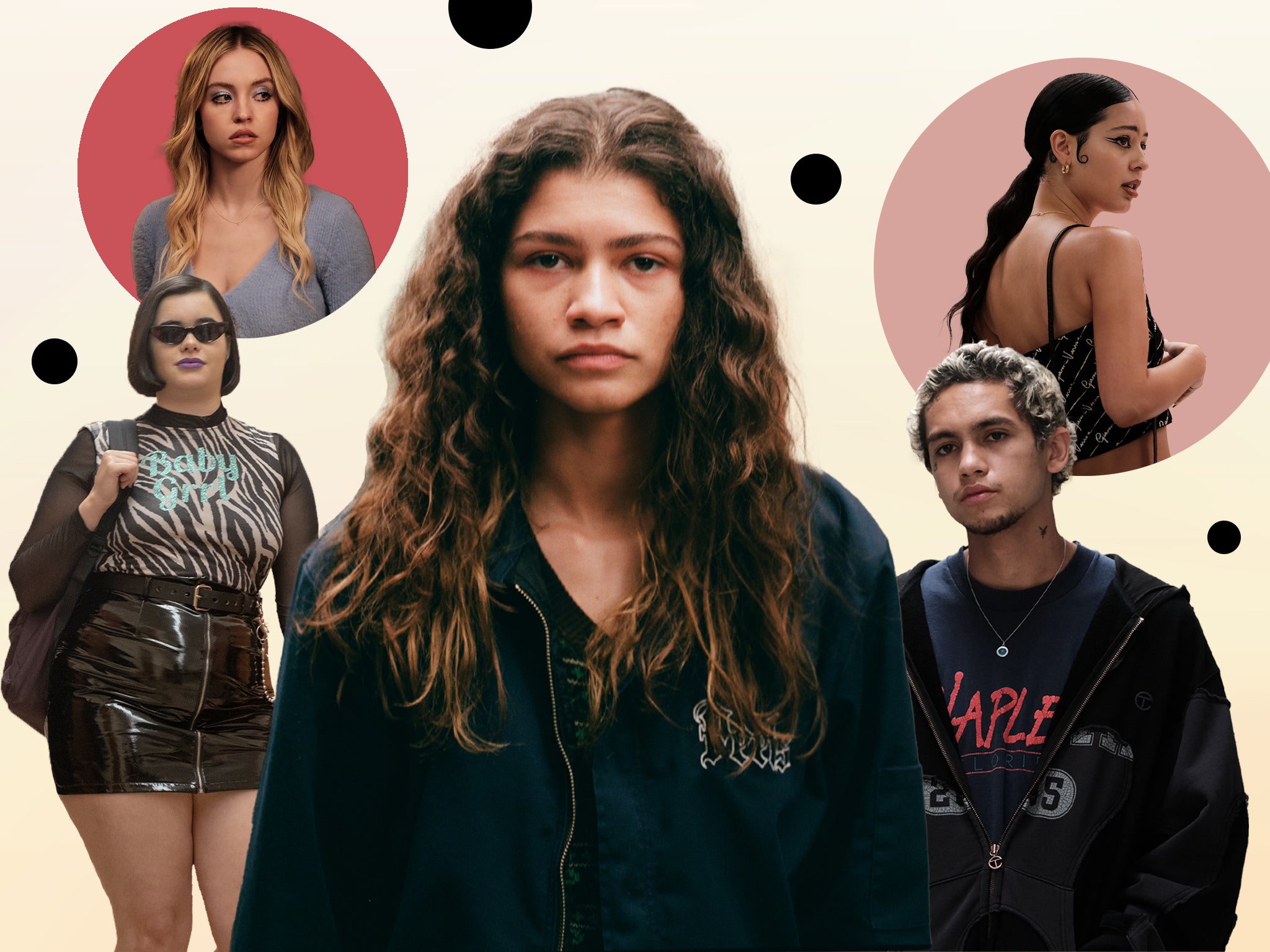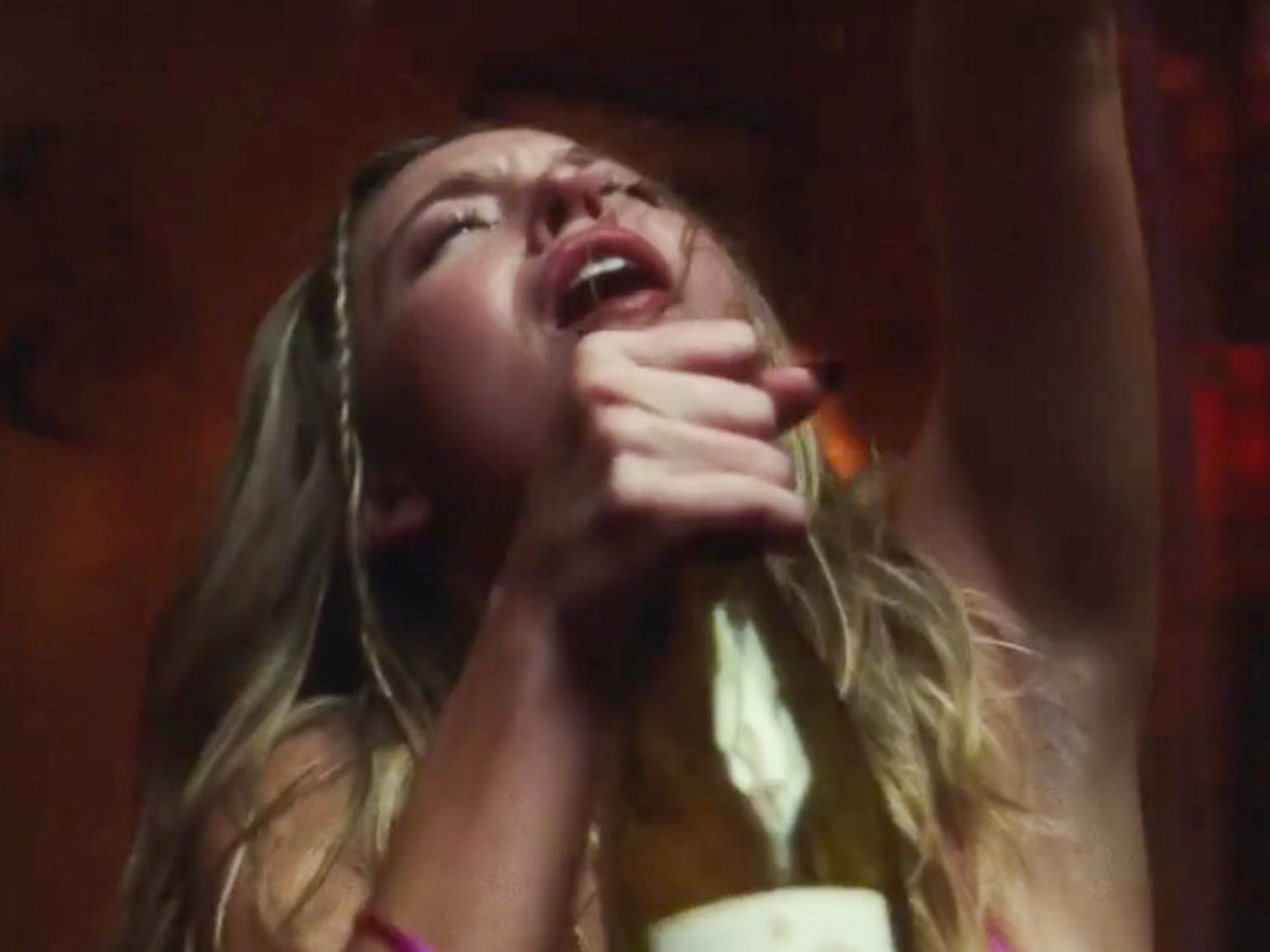‘It’s how teenagers imagine themselves to be’: How Euphoria’s soundtrack serves the show’s warped reality
Even the ugliest things are made beautiful in the hit Sky Atlantic show’s stylised tableau of teenhood. Annabel Nugent talks to composer Labrinth, cinematographer Marcell Rév, and music supervisor Jen Malone about how they created its warped reality


Your support helps us to tell the story
From reproductive rights to climate change to Big Tech, The Independent is on the ground when the story is developing. Whether it's investigating the financials of Elon Musk's pro-Trump PAC or producing our latest documentary, 'The A Word', which shines a light on the American women fighting for reproductive rights, we know how important it is to parse out the facts from the messaging.
At such a critical moment in US history, we need reporters on the ground. Your donation allows us to keep sending journalists to speak to both sides of the story.
The Independent is trusted by Americans across the entire political spectrum. And unlike many other quality news outlets, we choose not to lock Americans out of our reporting and analysis with paywalls. We believe quality journalism should be available to everyone, paid for by those who can afford it.
Your support makes all the difference.Some shows are more of a feeling than anything else. Sure, there’s a plot, but it’s not the promise of narrative progression that keeps you coming back: it’s the mood. Euphoria is one of those shows. The world of HBO’s teen drama for adults is instantly recognisable. Psychedelic colours, topsy-turvy camerawork and an era-spanning soundtrack have helped build the series’ cachet. You know a Euphoria scene when you see one. When you hear one. When you feel one. As one of the show’s Gen-Z cohort might say, it’s a whole vibe.
When season one debuted in 2020, it invited audiences into creator Sam Levinson’s dark fantasia of suburbia. The show’s highly stylised look and feel was at odds with its social drama storyline, which revolves around drug user Rue (Zendaya) and her struggle to remain sober. Here, controversially, everything from overdose to abuse is moodily lit, glitter-strewn, and set to a spine-tinglingly good soundtrack.
In Euphoria – whose second season came to an explosive end last month – even the ugliest things are made beautiful. Levinson favours a warped reality, and captures it using some of the most distinctive music and cinematography on the air.
The Euphoria look has become iconic. There’s a sheen to it, as if the lens is painted with shimmery nail polish, or dripping with the cold sweat of withdrawal. Each scene is a picture-perfect tableau of teenhood. Levinson reached out to Hungarian cinematographer Marcell Rév, with whom he had previously worked on 2018’s Assassination Nation, before there was even a script. But already in those early conversations, Levinson knew what he wanted.
“Sam wanted it not to look like the reality of today’s teenagers, but how they imagined themselves to be,” Rév tells me over Zoom. “The show’s aesthetic is grounded in truth but it’s a subjective truth. We’re trying to tap into the emotions of these characters, not their physical reality.”
Rév’s job, then, is to usher us from our surface reality into Levinson’s underworld of emotion. It’s a grandiose sentiment that mostly boils down to the nuts and bolts of lighting. “We’re putting lights in places where you would never put them in a realist show because it wouldn’t make sense,” explains Rév. “But on Euphoria, if it serves a certain emotionality or a certain narrative, then we not only allow ourselves to do that – we consciously push each other to do it.”
The task of cultivating Euphoria’s mood doesn’t fall solely to Rév. London-born rapper Labrinth shoulders a hefty portion of that responsibility, too. Because while some scores dissolve into the background, Labrinth’s – a lively, often strange crossbreed of genres – is practically a character itself. Levinson reached out to Labrinth after hearing his 2019 album Imagination & The Misfit Kid. “Sam liked that my music felt like it was constantly growing,” recalls Labrinth over the phone from his studio in LA.
Melding genres comes naturally to Labrinth. “I’m from the UK, we’re a melting pot of styles. Even within genres – drum’n’bass, trip-hop – it’s always borrowing from other stuff. So I’m very used to that mentality.” Putting a gospel choir next to an electronic drumbeat is second nature to him. And part of the reason why scoring Euphoria appealed so much.
“You’re allowed to do a lot in Euphoria,” he says, speaking about the show’s skewed reality. “There’s a no holds barred approach to genre. I can put a hip-hop track with sci-fi. These are elements that traditionally wouldn’t exist together in that environment, but in Euphoria I can do whatever if it elevates the experience.”

Watch Apple TV+ free for 7 days
New subscribers only. £8.99/mo. after free trial. Plan auto-renews until cancelled

Watch Apple TV+ free for 7 days
New subscribers only. £8.99/mo. after free trial. Plan auto-renews until cancelled
Take “Yeh I F***in’ Did It”, a propulsive track that has racked up almost 8 million listens on Spotify. Labrinth conceived of it as though gospel legend James Cleveland was a member of Kraftwerk. He originally composed it with drug dealer Fezco in mind, but it ended up soundtracking Rue’s police chase in episode five instead. It was one of a number of instances when Levinson took what Labrinth gave him and reassigned it to another part of the series.
“Most of the time Sam likes it when I don’t watch anything and I just make what I’m inspired by,” he smiles. “I’m like a box of inspiration to him. He tells me, ‘Just keep throwing those bits of inspiration at me and I’ll know where to use it.’”
It’s rare that Labrinth will compose a specific song for a specific scene, but sometimes logistics demand exactly that. As in episode two of the second series, when Maddy (Alexa Demie) is rushing to hide the evidence after playing dress-up in her boss’s lavish wardrobe. “Sam needed something urgent and extreme,” says Labrinth. He hit a vein of inspiration from an unexpected source: Midsomer Murders. “I’m English!” he laughs by way of explanation. “I wanted to channel that electronic music they play when they’re investigating a murder.” It works; the scene thrums with tension worthy of a pastoral homicide.
As Labrinth’s score has become indispensable to Euphoria, so too has the man himself. The musician somewhat breaks the fourth wall when he appears in a cameo at the end of episode four in series two. Donning his Sunday best, Labrinth performs “I’m Tired” – a song that he and Zendaya wrote together – during a funeral service that Rue is hallucinating.
“Originally Sam had told me it was going to be Gladys Knight who was doing the scene.” Labrinth gives a hearty laugh. “I was like, ‘Is this guy trying to gas me up?’ Talk about pressure!” They ran the scene four times so that Rév could capture it from all the angles Levinson wanted. It’s an emotional moment to perform once, let alone four times. “Zendaya was like, ‘Lab... I’m crying every single time. What the hell?’”
But Labrinth’s score is only one piece of the sonic puzzle. Music supervisor Jen Malone, whose sharp ear has shaped the sound of hits including Atlanta and Yellow Jackets, crams every episode with songs that jump genres, continents and eras within minutes. It’s a sonic buffet, and nothing is off the table. In any given hour, you can expect to hear rising rapper Baby Keem spitting bars sandwiched between the industrial synth-pop of Depeche Mode and the Spanish-language heartache of Selena.
Questions have been raised over just how realistic Malone’s song selections are. And it’s true that while DMX and Tupac blaring during the show’s party scenes can be explained away (yes, even Gen Z-ers know the first line to “Hit ’Em Up”), Fez counting money to a Sonny Skillz 1995 deep cut doesn’t exactly ring true. And for a series so hyper-aware of its generation, Euphoria is remarkably festooned with classic Seventies pop-rock moments.
“Would certain music be playing at certain moments? Maybe not,” shrugs Malone down the line from Los Angeles. “That’s not what we’re trying to do here.” Malone’s soundtrack has as little reverence for factual accuracy as Rév’s visuals do. Emotional resonance is the only goal.
Often, Malone will select a song purely on gut feeling. The feeling you get when a moment affords both song and scene an emotional depth they couldn’t achieve on their own. Mostly it’s trial and error (“We’ve got a King of the Hill mentality”) but sometimes Malone will just know, like she did in episode two. Watching Maude Apatow’s wallflower Lexi hop on her bike and pedal her way to self-confidence to the pulsating hyperpop of Laura Les’s “Haunted” is sheer wish-fulfilment. “Lexi steps up and takes ownership of her life, and that song with its energy was just...” Malone can’t find the words.
Season two looks like it’s fading away a little bit, like a fractured memory that you’re in
At the end of the day, she continues, “it’ll come down to us sitting in the editing room and thinking, ‘Wow, this is dope.’” Dope is certainly one word to describe the Sinead O’Connor needle drop in episode four. The 1987 power ballad, “Drink Before the War”, blares from a jukebox as Nate’s dad Cal mournfully, drunkenly sways at the bar where he embraced his high school love decades earlier.
Seconds later, it is Cassie who slurs along to O’Connor’s Gaelic wail. She sings and weeps at a house party, tangled up in the pink ribbon of floating balloons. The unexpected song selection provides a different feeling from, say, a more obvious, sentimental option like Adele or even Amy Winehouse – but it’s the surprise that makes it ideal.
Getting clearance from the Irish singer-songwriter was relatively straightforward. “The only thing Sinead was adamant about was that there be no sexual violence in the scene,” recalls Malone. An artist licensing their material is typically a question of money, but Euphoria – a minefield of sex, drugs and violence – throws up obstacles.
Surprise, surprise: not everyone wants their song being used over a scene of a young girl shooting up. Or a drug-dealing grandma kneecapping the boss of a strip club while he gets a blowjob in the back room, which is exactly how season two opens. Securing clearance to use Billy Swan’s woozy country soul cover of Elvis Presley’s “Don’t Be Cruel” for that was a big win, grins Malone.

On first watch, this second season of Euphoria appears to be business as usual: a sensory overload of neon colours and wall-to-wall bangers. But the devil’s in the details, or rather Rév’s moodboards. While he found season one’s aesthetic by scrolling Tumblr pages (“there’s a courage you see in teenage photography that you don’t get with established artists”), this season has been less interested in contemporary sources.
“We wanted to make something that looked like a memory of high school rather than something so in the moment,” says Rév. It’s partly why this series was shot entirely on film: an Ektachrome 35mm stock, which hasn’t been available since the mid-2000s but Kodak agreed to manufacture especially for Euphoria.
“I had originally wanted to shoot season one on film, but now I’m happy we didn’t because now there has been this journey. It looks like it’s fading away a little bit, like a fractured memory that you’re in.” Musically, Malone was given the same brief. “We were trying to tap into that memory vibe,” she says. “We were working with a lot of artists’ back catalogues to help build that sense of nostalgia.”
The camera, too, has slowed down. “Season one never stopped, the camera was always pushing in,” recalls Rév. But season two takes things slower. While the energy of the first series is perhaps best exemplified by a complicated tracking shot in episode four that required 400ft of dolly track and lasted over two minutes, the emblematic moment of season two is more simple. Asked for his favourite shot of the season, Rév selects one from the finale: Lexi and Rue reconnecting on Lexi’s bedroom floor in the aftermath of her play. No fancy camerawork or bold lighting.
“It’s a little more chill. We allow ourselves to sit longer on faces. It’s calmer. Less stressed out,” he says. “As we’re diving a little deeper into these characters, the horizon closes in a little bit.”
Sometimes art feels truer to life than life does. For teenagers, that sentiment is tenfold. Adolescent emotions seem to run closer to the surface; they vibrate with all the tenderness of an exposed nerve. Teen heartbreak isn’t like the end of the world; it is the end of the world. Or it feels like it is, which is pretty much the same thing at that age. Euphoria understands that.



Join our commenting forum
Join thought-provoking conversations, follow other Independent readers and see their replies
Comments